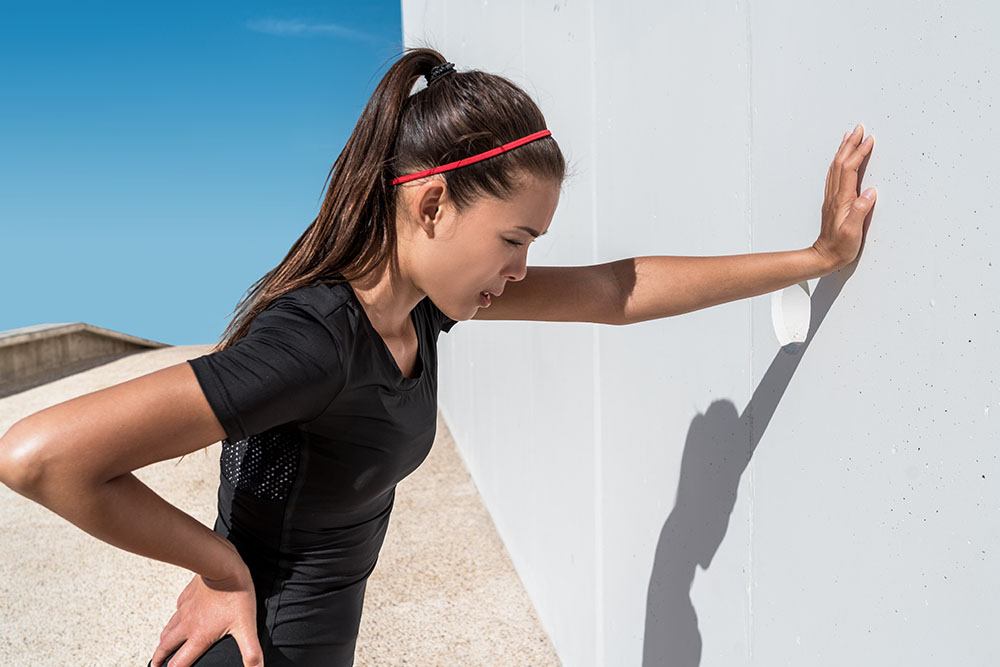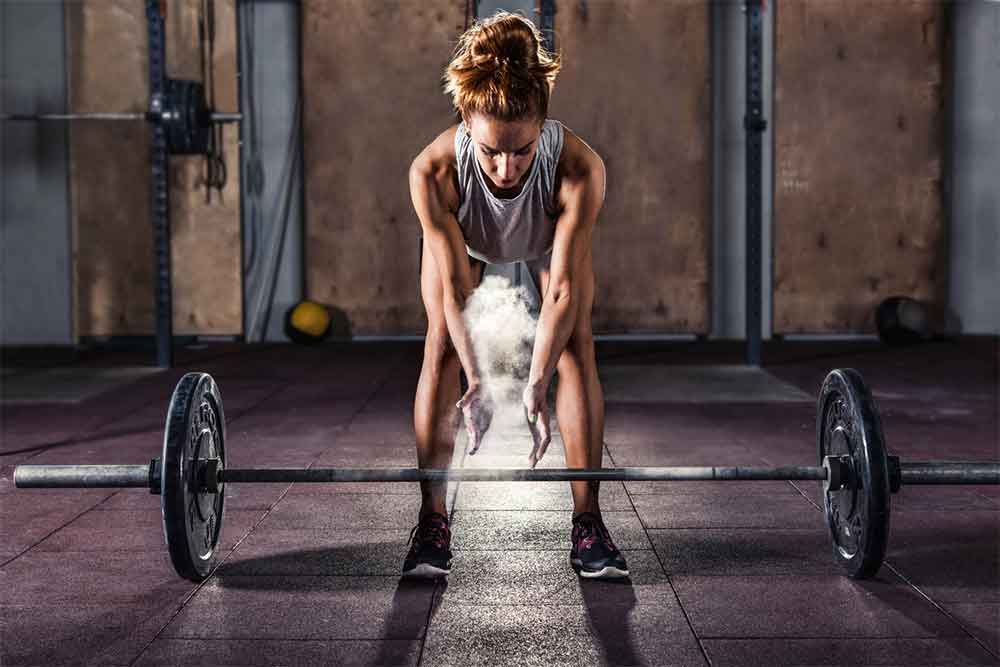Find Your Rhythm Through Hula Hooping

Gabrielle Revlock
Edited by: Julia C. Basso, PhD
Rhythm is the brain’s bread and butter. In fact, neurons fire together in rhythmic patterns called oscillations. These brain rhythms keep time, allowing us to track time and space, understand where we are in the world, and learn and remember information about our experiences. When we begin to move, the neurons of the brain begin to fire in a particular rhythm known as the theta wave or oscillation. This pattern of activity helps the brain to become more synchronous. It is hypothesized that this enhanced rhythmicity during movement contributes to exercise-induced improvements in learning and memory. That is, when we exercise, populations of neurons in the brain become more synchronous, which causes them to communicate more effectively, which enhances the ability for cognitive functioning.
Rhythm Through Hula Hooping
One dancer, Gabrielle Revlock, studies rhythm in a very unique way – through the use of a hoop. She uses the age-old hula-hoop in creative and non-traditional ways and challenges herself to create movement through improvisational techniques.
When Revlock first started hooping in 2006 she was attracted to the mesmeric quality of the hoop. She was also intrigued by it as a demanding object, a limitation, and a barrier. Revlock explains, “The hoop is something to metaphorically and physically push against. In the artistic process (or in any process) it can be hard to know where to start, but I don’t have to make that choice when I have my hoop with me — I simply pick it up and we’ve already begun.” She notes that, “My hoop is a partner with which I negotiate the dance. It insists that I attend to it in specific ways. Most basically, that means maintaining a constant pulse radiating from my hips. Otherwise, it will fall. This immediate feedback from the hoop establishes our relationship. Beyond that, it initiates movements, at times leads, and the experience is in turns stressful, frustrating, exhilarating, meditative, and awkward.”
From this description of her interaction with the hoop, it is obvious that Revlock is deeply attentive to this object. She creates rhythm within her body (and therefore her brain) that helps to sustain the movement of the hoop. Certainly, her training over time with the hoop has changed how her brain and body responds to the hoop as it constantly tries to fall towards the floor with gravity. Research has shown that people who train in specific types of physical activities (for example, baseball, football, or golf) have profound changes that occur in the brain. Motor cortical areas tend to be larger and connections between subcortical and cortical brain regions tend to be strengthened.
Related Article: Think Positive Thoughts For A Better Workout
Exciting New Research
 For example, exciting new research shows that professional baseball players show distinct changes in their brain. Dr. Paul Sajda and his team at Columbia University found that three brain regions are particularly active when hitting a baseball, specifically the fusiform gyrus, supplementary motor area, and frontal cortex. Expert hitters are expert because they can activate these areas very early in the pitch sequence. As it turns out, professional baseball players have a profound ability to differentiate between specific pitches. This ability is most likely due to heightened activation in the fusiform gyrus (Muraskin et al., 2015), a region of the brain that helps us to identify objects (Weiner & Zilles, 2016). In addition, professional baseball players show stronger connectivity between the fusiform gyrus and the primary motor cortex (Muraskin et al., 2017). That is, the brain region involved in recognizing the pitch is more strongly connected to the brain region that initiates and performs the swing. This serves to increase the flow of information between these two regions, thus making the execution of the swing both faster and more accurate.
For example, exciting new research shows that professional baseball players show distinct changes in their brain. Dr. Paul Sajda and his team at Columbia University found that three brain regions are particularly active when hitting a baseball, specifically the fusiform gyrus, supplementary motor area, and frontal cortex. Expert hitters are expert because they can activate these areas very early in the pitch sequence. As it turns out, professional baseball players have a profound ability to differentiate between specific pitches. This ability is most likely due to heightened activation in the fusiform gyrus (Muraskin et al., 2015), a region of the brain that helps us to identify objects (Weiner & Zilles, 2016). In addition, professional baseball players show stronger connectivity between the fusiform gyrus and the primary motor cortex (Muraskin et al., 2017). That is, the brain region involved in recognizing the pitch is more strongly connected to the brain region that initiates and performs the swing. This serves to increase the flow of information between these two regions, thus making the execution of the swing both faster and more accurate.
There is no doubt that these changes could also be found in expert hoopers like Revlock – an obvious open area of research. In speaking about what it means to be an expert hooper, Revlock notes, “My proficiency means that I’m rarely actively thinking about the hoop. I can turn the thinking over to my body. I call this unification, this state of constant gyration – my new body. In truth, it’s not so different from my old body.”
In reality, though the body might not be so different – the brain is. To become so in tune with an entity such as the hoop, many changes must happen in the brain. These changes may include new neurons, growth and lengthening of the connections between the neurons, new vasculature around the brain, new glia or support cells in the brain…the list goes one. Importantly, these changes take time – which is why it takes so long for one to become an expert.
Related Article: Do Younger & Older Brains Respond Differently To Dance?
Ways To Improvise With The Hoop
Below is a description by Revlock about ways that you can engage with the hoop as an object. This is followed by a description about how you can use to hoop to engage in HIIT:
Revlock notes, “A healthy relationship relies on good listening skills and a willingness to be flexible- to fluctuate between guiding and yielding. A relationship with an object is no different. One score I devised to compose with the hoop is called Ouija Board. It necessitates deep listening to the pulse of the hoop then incorporating scale to amplify or diminish the specific movements in the body (e.g., lifting the right shoulder up and down). From there I layer decorative movements- detailed and isolated, often gestures, that are not connected to the undulations that keep the hoop in motion. I’ve noticed that the act of improvising feels different, more relaxed, with the addition of a hoop. This small distraction (keeping the hoop in motion) allows my mind to feel less overwhelmed by unlimited choreographic possibilities.”
A Fun & Unique Way To HIIT
Want a fun and innovative way to engage in HIIT? Try hooping! New fitness studios are emerging that focus on using the hula-hoop to burn those calories. In fact, hooping can be an effective (and fun) way to get fit. As a fitness tool, the hoop is cheap, doesn’t take up much room, and can be used by the entire family – making it an ideal addition to any living room. While working with the hoop, you can get your heart rate up quickly, making it ideal for HIIT. You can also use the hoop in non-traditional ways, like hoop circuit training. YouTube offers many videos to get you started with your HIIT hooping regimen, and you can even subscribe to the Hooplovers YouTube Channel for more ideas!
You Might Like:
The Science of Temperature Therapy
Temperature therapy (also known as “thermal therapy” or “thermotherapy”) involves the use of heat or cold to improve health and function. Interestingly, thermotherapy has been around for centuries, with ancient cultures regularly using hot springs,...The Predictors of Longevity You Need to Care About
Living a long and healthy life is a universal aspiration, and with the publication of Peter Aittia’s new book “Outlive”, it has never been a bigger focus. With this has come the realisation that, while...How Overtraining and Undertraining Impacts Hormonal Health
While maintaining a healthy hormonal balance is essential for overall health and wellbeing, it is an often-overlooked component of women’s health. Hormones play a vital role in regulating various bodily functions, including metabolism, energy, mood,...12 days of Fitness: 12 Holiday workouts to crush this Christmas
The holiday period is a time for friends, food, and family. With this in mind, it should be a time of guilt-free fun. However, that doesn’t mean you have to neglect your fitness entirely over...Upper Body Strength in Post-Menopausal Women
Menopause is a unique time in the human life, and with it comes a myriad of changes that can have wide reaching health implications. However, over the last 20 years we have seen a strong...Exercise After Menopause: What You Need To Know
Menopause is one of the most significant events in a woman’s life, and with it comes several changes that can affect function. Moreover, the post-menopausal period comes with many health considerations that can have a...References:
Muraskin, J., Sherwin, J., Lieberman, G., Garcia, J. O., Verstynen, T., Vettel, J. M., & Sajda, P. (2017). Fusing Multiple Neuroimaging Modalities to Assess Group Differences in Perception–Action Coupling. Proceedings of the IEEE, 105(1), 83-100.
Muraskin, J., Sherwin, J., & Sajda, P. (2015). Knowing when not to swing: EEG evidence that enhanced perception–action coupling underlies baseball batter expertise. NeuroImage, 123, 1-10.
Weiner, K. S., & Zilles, K. (2016). The anatomical and functional specialization of the fusiform gyrus. Neuropsychologia, 83, 48-62.
















